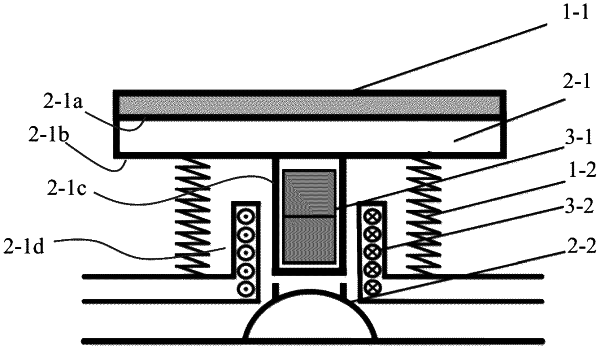| CPC H02J 50/001 (2020.01) [G06F 3/0202 (2013.01); G06F 3/0231 (2013.01); H02J 7/0013 (2013.01); H02J 7/35 (2013.01); H02J 50/005 (2020.01); H02J 50/10 (2016.02); H02J 50/402 (2020.01); H02J 2207/20 (2020.01); H02J 2300/24 (2020.01)] | 5 Claims |

|
1. A self-powered wireless keyboard, comprising:
a plurality of key units, each unit including:
a key having a lower surface and a protrusion block extending from the lower surface;
a key slot underneath the lower surface of the key and around the protrusion block;
a permanent magnet core arranged inside the protrusion block; and
an induction coil wound around the protrusion block and within the key slot, and
a power management module configured to receive induced current generated by the induction coil of each of the key units and supply power for the wireless keyboard;
where the key of each of the key units has an upper surface provided with a solar cell film, and generated current by the solar cell film is sent to the power management module;
and wherein the lower surface of the key of each of the plurality of key units is provided with two spiral coils each having an upper end and a lower end, the upper ends of the two spiral coils being respectively connected with positive and negative poles of the solar cell film, and the lower ends are connected with the power management module.
|